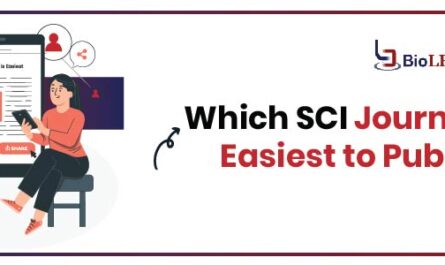When it comes to academic publishing, the quest to disseminate research findings in a manner that is both impactful and financially viable remains a paramount challenge for scholars worldwide. The year 2025 has ushered in an era where the abundance of information necessitates a strategic approach to select the right publication platform. This endeavor, while daunting, is critical for enhancing the visibility and credibility of one’s work within the scholarly community. Navigating through the myriad of journal options, especially those that are Scopus-indexed, requires a nuanced understanding of various factors that transcend mere indexing. These factors include the journal’s impact factor, audience reach, publication speed, and, importantly, the economic aspect of publishing. Balancing these considerations can seem like a tightrope walk, but with the right knowledge and tools, it becomes an achievable mission. This exploration aims to arm researchers with the insights and strategies needed to make informed decisions, ensuring their research not only finds the right audience but does so without breaking the bank.
What Criteria Should You Consider When Choosing A Journal?
- Undertaking the journey of publishing academic research can often feel like navigating through a labyrinth, especially when the goal is to find the best and most insightful yet cost-effective and affordable Scopus indexed journals in one’s field in 2024.
- The first step of a Scopus indexed journals involves understanding the multifaceted criteria that go beyond mere indexing.
- This crucial phase not only sets the tone for your publication success but also ensures that your research reaches the right audience while adhering to your budget and timeline.
What Is The Importance Of The Journal’s Impact Factor?
- The impact factor of a journal serves as a traditional metric that reflects the yearly average number of citations that articles published in the last two years in a specific journal received.
- It’s an indicator of the journal’s prestige and influence within its field.
- However, when considering fast track publication journals Scopus in Medicine, one must ponder whether a higher impact factor aligns with their research goals.
- Is the aim to reach a broader audience or to contribute significantly to a niche area?
- High-impact journals often have more rigorous peer-review processes and longer publication timelines, which might not be ideal for all research types.
How Relevant Is The Audience & Scope Of The Journal?
- Identifying the right audience is pivotal.
- The scope of the journal should align with your research’s niche to ensure that it reaches readers who can truly benefit from and contribute to your work.
- For scholars looking at Paid Scopus indexed journals in India, assessing the regional focus and the audience’s interests becomes crucial.
What Are The Open Access Policies & Their Impact?
- Open access policies dramatically influence the visibility and accessibility of your research.
- Open access journals allow unrestricted access to your work, potentially increasing its impact and citation rate.
- However, this often comes with publication fees that can be substantial.
- When considering cost-effective publishing options, it’s essential to weigh the benefits of increased accessibility against these fees.
Where Do Publication Fees Fit Into Your Decision?
- Publication fees, often referred to as article processing charges (APCs), can vary widely among journals.
- For researchers seeking affordable, fast track publication journals Scopus, understanding the fee structure is critical.Some journals offer waivers or discounts based on the author’s location, affiliation, or financial situation.
- Investigating these options can uncover opportunities for publishing in reputable Scopus journals publication India without incurring high costs.
- · Choosing the right journal for your research involves a delicate balance between several factors, each carrying its weight.
- · The impact factor, while indicative of a journal’s prestige, should be considered alongside the journal’s scope, audience, open access policies, and publication fees.
- · For those in specific fields like medicine, seeking out fast track publication journals Scopus in Medicine can be a strategy to accelerate the dissemination of urgent findings.
- · Meanwhile, researchers in India might explore Scopus indexed journals 2025 with low cost for opportunities that align with regional interests and funding landscapes.
- · Ultimately, the goal is to ensure that your research not only finds its rightful place in the academic community but does so in a manner that is both impactful and financially sustainable.
Where To Find Affordable Scopus-Indexed Journals In Your Field?
- In the quest for scholarly publication, one of the paramount steps for researchers is finding the right platform that not only enhances the visibility of their work but also aligns with their budget constraints.
- The pursuit of affordable Scopus-indexed journals within one’s field in 2025 necessitates a strategic approach, leveraging a variety of resources and strategies to unearth those hidden gems that offer both quality and cost-effectiveness.
Where Can Academic Databases Lead You?
- Academic databases are the cornerstone for researchers looking for Scopus-indexed journals.
- Scopus itself, being a reputable and comprehensive database, provides an extensive list of indexed journals, including details about their impact factor, open access status, and subject area coverage.
- For those aiming for fast publishing Scopus indexed journals in Multidisciplinary areas, utilizing Scopus’s advanced search filters can significantly streamline the discovery process.
- Keywords such as “Fast publishing Scopus indexed journals in Multidisciplinary” or “Free Scopus indexed journals fast publication” can guide you towards journals that are not only reputable but also prioritize rapid publication timelines and offer free or affordable publication options.
How Can Professional Networks Unveil Opportunities?
- Engaging with professional networks and academic communities is another invaluable strategy.
- Platforms such as LinkedIn, ResearchGate, and academic listservs can provide insights and recommendations from peers and seasoned researchers. These networks often feature discussions or recommendations about cost-effective publishing avenues, including fast publishing Scopus indexed journals.
- Engaging in these conversations can also uncover personal experiences and tips for negotiating publication fees or finding funding opportunities to cover such costs.
What Role Do Academic Advisors & Mentors Play?
- For early-career researchers and students, academic advisors and mentors can be a treasure trove of guidance.
- These individuals have likely navigated the publishing landscape extensively and can offer advice tailored to your specific field and research goals.They may recommend journals known for free Scopus indexed journals fast publication, particularly in fields where rapid dissemination of research findings is crucial.
- Moreover, mentors can share their experiences regarding which journals offer the most value in terms of impact, audience reach, and affordability.
Where Are Calls For Papers An Indicator?
- Calls for papers can serve as a direct indicator of journals seeking submissions.
- Many journals, especially those looking to establish themselves or expand their audience, may offer special terms, including waived or reduced publication fees for certain issues or to encourage submissions in emerging research areas.
- Keeping an eye on academic conferences, society newsletters, and dedicated call-for-papers websites can highlight opportunities for affordable submissions to Scopus-indexed journals.
How Do Funding Opportunities Relate To Publication Choices?
- Understanding the landscape of funding opportunities for publication can also influence where to submit your work.
- Many institutions, research grants, and scholarly societies offer financial assistance or reimbursement for publication fees, especially for open access journals.
- Identifying these opportunities can broaden your options, allowing you to consider journals that might otherwise be out of financial reach.
- Finding affordable Scopus-indexed journals in your field in 2025 is a multifaceted process that requires a blend of research, networking, and strategic planning.
- By utilizing academic databases, engaging with professional networks, consulting with academic advisors, responding to calls for papers, and exploring funding opportunities, researchers can identify journals that offer the right balance of cost, speed of publication, and academic rigor.
- Whether the goal is to find fast publishing Scopus indexed journals in Multidisciplinary areas or free Scopus-indexed journals fast publication avenues, the resources and strategies outlined above provide a comprehensive roadmap for navigating the publishing landscape effectively.
Deciding to publish in a manner that is both cost-effective and impactful is akin to charting a course through uncharted waters. The process demands diligence, foresight, and a strategic mindset. As we have navigated through the intricacies of finding the ideal scopus indexed journals 2025, it becomes evident that the path is lined with opportunities and pitfalls alike. The key to success lies in leveraging the right resources, asking the right questions, and staying informed about the ever-changing landscape of academic publishing. By prioritizing factors such as journal prestige, audience relevance, open access policies, and publication fees, researchers can ensure their work achieves the recognition it deserves. Moreover, understanding that this process is not just about finding a platform for publication but about fostering the growth and impact of one’s research is essential. As we move forward, let us embrace the challenge with optimism and the assurance that with the right approach, finding the perfect home for our research is not just a possibility but a certainty.




